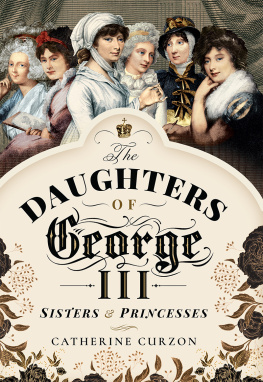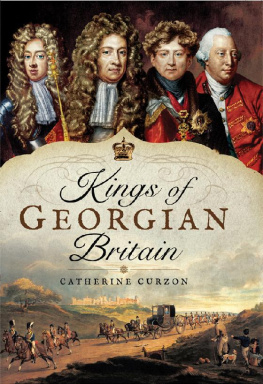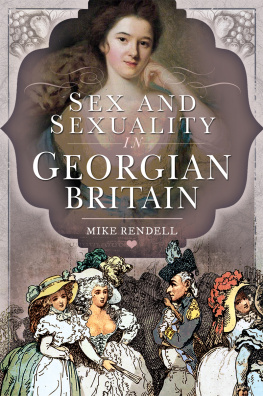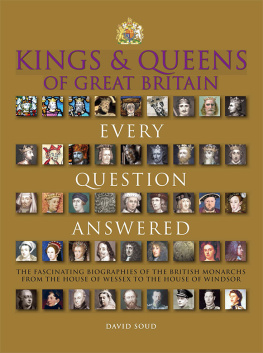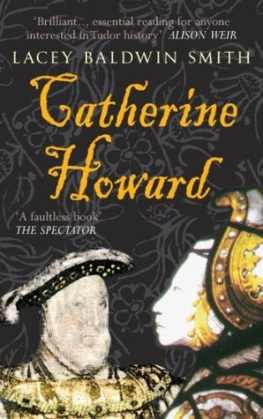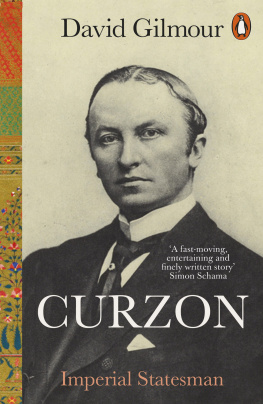Queens of Georgian Britain
For Rob, the listening lister!
Queens of Georgian Britain
Catherine Curzon
First published in Great Britain in 2017 by
Pen & Sword History
an imprint of
Pen & Sword Books Ltd
47 Church Street
Barnsley
South Yorkshire
S70 2AS
Copyright Catherine Curzon 2017
ISBN 978 1 47385 852 7
eISBN 978 1 47385 854 1
Mobi ISBN 978 1 47385 853 4
The right of Catherine Curzon to be identified as the Author of this Work has been asserted by her in accordance with the Copyright, Designs and Patents Act 1988.
A CIP catalogue record for this book is available from the British Library
All rights reserved. No part of this book may be reproduced or transmitted in any form or by any means, electronic or mechanical including photocopying, recording or by any information storage and retrieval system, without permission from the Publisher in writing.
Pen & Sword Books Limited incorporates the imprints of Atlas,
Archaeology, Aviation, Discovery, Family History, Fiction, History,
Maritime, Military, Military Classics, Politics, Select, Transport,
True Crime, Air World, Frontline Publishing, Leo Cooper,
Remember When, Seaforth Publishing, The Praetorian Press,
Wharncliffe Local History, Wharncliffe Transport,
Wharncliffe True Crime and White Owl.
For a complete list of Pen & Sword titles please contact
PEN & SWORD BOOKS LIMITED
47 Church Street, Barnsley, South Yorkshire, S70 2AS, England
E-mail:
Website: www.pen-and-sword.co.uk
Acknowledgements
May the warmth of thanks radiate a rosy glow for all the team at Pen and Sword Books, especially Jon and Lauren. Thanks also to Lucy, the finest, fiercest editor an author could wish for.
For fudge, tea and a comfy bed, a big thank you is also due to the amazing folks of The Foxglove, Bexs, Beck Hall and T&Cake, the warmest establishments in the Yorkshire wilds. The kettle is always on for anyone who has ever taken a moment to read my eighteenth century ramblings. And for those who have stopped by the virtual salon, or have just encouraged and nudged me along in my pursuit of Georgian fabulousness.
For friends hither and thither, on this side of the world and the other, never, ever stop being amazing and Kathryn, keep your clapper handy.
Adrian and Caroline, you have rocked my world in a most eighteenth century sense!
To Pippa, Nel and Custard, how adorable can one trio get?
And especially for the Rakish Colonial now you know exactly what a queen consort is!
List of Illustrations
Sophia Dorothea of Celle.
Caroline of Ansbach. Philip van Gunst.
Her Most Gracious Majesty Queen Charlotte. Thomas Ryder, after Sir William Beechey.
Caroline, Princess of Wales. John Murphy, after Thomas Stothard. 1795.
Bartolomo Bergami.
Queen Charlotte and George Prince of Wales. 1765, Robert Pile, after Richard Houston.
The murder of Count von Knigsmarck.
Caroline of Ansbach. Alexander van Haecken, after Jacopo Amigoni, 1736.
Horace Walpole. Henry Hoppner Meyer, after Sir Thomas Lawrence. 1795.
HRH Caroline, Princess of Wales and the Princess Charlotte. Francesco Bartolozzi, after Richard Cosway. 1799.
George III and his Family. Richard Earlom, after Johann Zoffany.
His Majesty King George III returning to Town from Windsor with an Escort of 10th Prince of Wales Own Light Dragoons. Charles Turner, after Richard Barret Davis. 1806.
Robert Walpole, First Earl of Oxford. Jacobus Houbraken, after Arthur Pond. 1746.
Henry Brougham, first Baron Brougham and Vaux. Charles Wagstaff, after Comte Alfred dOrsay.
Charlotte, Queen of Great Britain.
Her Most Gracious Majesty Caroline, Queen of England. T Wageman, after Thomas Woolnoth. 1810.
Queen Caroline, wife of King George IV, is greeted by people from Marylebone. Theodore Edward Hook. 1820.
Caroline R (Queen of England). Abraham Wivell. 1820.
Her Majesty Queen Charlotte. Sir William Beechey. 1809.
The present royal family: George III, Queen Charlotte, Princess of Wales, Duchess of York. 1795.
Charlotte of Mecklenburg-Strelitz. Henrik Roosing. 1789.
Caroline of Ansbach. Leonard Schenk, after Adolf van der Laan. 1727.
The Prince and Princess of Wales. Francesco Bartolozzi, after H de Janvry, 1797.
Sophia Dorothea of Celle.
Funeral procession of a queen, probably Caroline of Brunswick, passing through Hammersmith in London. C Canton, after R. Banks.
Charlotte, Queen of Great Britain, and the Princess Royal. Valentine Green, after Benjamin West.
Queen Charlotte Sophia holding a baby.
The death bed of Queen Caroline. 1827.
The Royal Dozen.
Funeral procession of a Queen, possibly Queen Caroline. 1821.
Queen Charlotte. Richard Houston, after Johann Zoffany.
The grossly agitated King and Queen seated in a latrine to receive a message from the emaciated Pitt; satirizing the Royal reaction to news of the King of Swedens assassination. James Gillray. 1792.
Introduction
Four kings, five wives, three queens
One divorce, one secret marriage... and all sorts of scandal.
It reads like a particularly saucy maths problem.
No doubt at least two of those monarchs had wished that a theoretical sum was all it had happened to be, but not even kings of Great Britain can make a troublesome wife disappear.
Electors of Hanover, of course, might be another matter...
Welcome to the world of the Georgian queen consorts. These are the women who occupied the throne beside the bad-tempered George II, the occasionally mad George III and the always notorious George IV. Their tales are far from fairy stories, romantic bliss all too often eluding our eighteenth century royal couples, but for better or worse, there was always something going on.
The one thing these women have in common is that none of them were born in the country that would eventually become their home. Their backgrounds and lives differed wildly, their stories lurched from sort of happy all the way to downright murderous but whether they hailed from Celle, Ansbach, Mecklenburg-Strelitz or Brunswick, their names have gone down in the history of the British Isles.
From canvasses by Reynolds, Kneller, Gainsborough and a dozen other illustrious names, the queens have been immortalized to peer down through the centuries. They are clad in velvet and ermine, self-possessed, knowing, wistful and sometimes just a little bit insolent, but who were the women behind the powder and pomp? Through tumultuous times, they steered the ships of marriage, family and even government, negotiating childhood, matrimony, pregnancy and the ever-challenging, ever-changing vagaries of the British court. In a world where a wedding could start a dynasty or end a war, shake a continent or splash scandals across the newspapers of Europe, the role of a queen was not one to be entered into lightly.
After all, it wasnt all state visits, boundless adoration and eating bonbons whilst lounging on a Chippendale couch. There was plenty of splendour of course, but whether you had one child or managed to produce enough offspring to start your own rather regal football team, a Georgian queen hadnt simply landed a husband, she had committed to a full-time job.




